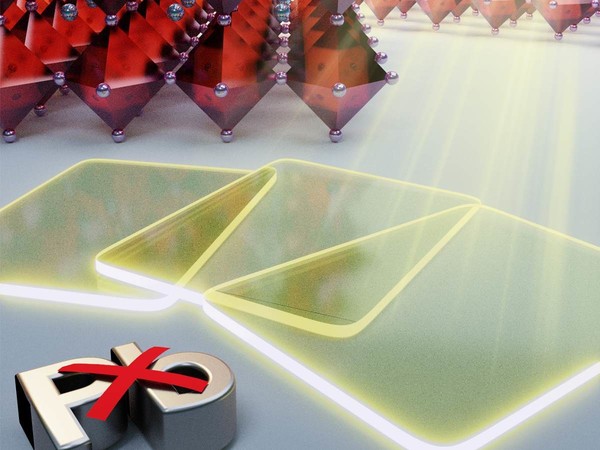The first transparent luminescent solar concentrator (LSC) based on lead-free perovskite nanocrystals was developed by scientists from the Czech Advanced Technology and Research Institute (CATRIN) in collaboration with colleagues from University of Erlangen–Nuremberg, Germany; Brno University of Technology; and VSB – Technical University of Ostrava. The unique solution overcomes the disadvantages of the existing perovskite solar energy devices, namely the presence of lead and low stability.
Luminescent solar concentrators (LSCs) are devices capable of absorbing sunlight and concentrating it at their edges, where it is subsequently converted into electrical energy by means of a built-in solar cell. “The main idea behind the whole LSCs concept is energy self-sufficient buildings, where their generally large glass areas are efficiently used to generate electricity. Thanks to the highly luminescent and colloidally stable perovskite nanocrystals developed in our Photoelectrochemistry group, we were able to construct a sufficiently transparent solar concentrator that resembles a classical window with its parameters,” explained the study’s correspondent author Štěpán Kment. The article was published by the Journal of the American Chemical Society—ACS Applied Energy Materials.
Another major advantage of the new LSC is the absence of lead, which is still dominantly used in this type of perovskite nanocrystals and brings significant environmental and health complications. “For this new type of LSC, we have achieved very promising efficiencies and good photostability. This work was possible mainly due to the excellent domestic and foreign cooperation with our colleagues from University of Erlangen–Nuremberg, Germany, and Brno University of Technology. My big thanks also go to the Endowment Fund of Palacký University, which largely funded my stay in Erlangen in Professor Schmuki and Professor Brabec’s group,” said the first author of the paper and Ph.D. student of physical chemistry at the Faculty of Science of UP Lukáš Zdražil.
The research team also drew on their experience with the LSC design from last year. The authors then used a different kind of luminescent 0D nanomaterials—carbon dots—to produce tandem LSC. The results were published by Nanoscale.
Luminescent solar concentrators are a major step to creating a sustainable and renewable network of photovoltaic power plants embedded in glass-walled areas of urban buildings. This could contribute to increasing the use of solar energy without unnecessary interference with the landscape.
